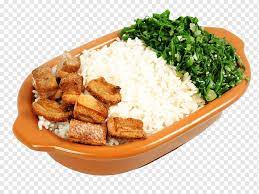
Introduction:
Brazil’s food scene is as colorful and varied as its Carnival celebrations, and the nation is large and diversified with a complex tapestry of cultures, landscapes, and customs. This culinary voyage delves into the distinct tastes, inspirations, and narratives that contribute to Brazilian cuisine’s allure as a fascinating fusion of African, Portuguese, indigenous, and immigrant cultures.
Foundations of Brazilian Cuisine: Brazilian food is mostly composed on a blend of native products and Portuguese cooking methods. Many cuisines use rice, beans, and manioc as their main ingredients. The staples of Brazilian families are rice and beans, or “arroz e feijão,” and the robust black bean stew feijoada, which is made with pork. These dishes represent the country’s many regional variants.
Bahia’s Afro-Brazilian Influence: The African impact on Brazilian food becomes more evident as we travel to Bahia. The use of spices, coconut, and palm oil gives food a distinctively Bahian flavor. The lively and spicy nature of Afro-Brazilian culinary traditions is exemplified by dishes like Moqueca, a delicious fish stew, and Acarajé, deep-fried black-eyed pea cakes filled with shrimp.
Amazonian Bounty: Brazilian cuisine benefits from the unique ingredients found in the Amazon jungle, which is home to an unrivaled biodiversity. Local meals feature exotic fruits like açaí and cupuaçu, as well as a soup created from wild manioc called tupi. Fish from the Amazon River, such pirarucu and tambaqui, give the area its own unique gastronomic character.
Brazil’s culinary tapestry reflects the warmth, richness, and exuberance of its people, whether you’re savoring the rich stews of Bahia, indulging in a churrasco feast in the South, or taking in the vibrant street food scene. As our trip comes to an end, we realize that the real spirit of Brazilian food is not just its delicious food but also the vivid soul of this South American culinary paradise—the camaraderie that envelops every shared meal.


Northeastern Delights: Brazil’s Northeastern area provides a taste palate influenced by its varied topography. A local specialty, carne-de-sol (sun-dried and salted meat) is sometimes served with manioc and green beans. The region’s happy vibe is reflected in the forró dance and music style, and the vibrant local markets include tropical fruits like cashew and mangaba.
Rodízio Culture in Southern Brazil: As we go south to places like Rio Grande do Sul, we come across the churrasco, or BBQ, culture. The gaucho (cowboy) background of the South is reflected in the rodízio eating style, when different slices of beef are presented straight to the table. The unique tastes of this area are enhanced by the local tea, chimarrão.
Street Food Extravaganza: The cuisine of Brazil is a gourmet journey unto itself. Street markets and festivities often feature coxinhas, which are deep-fried chicken croquettes, and pastéis, which are savory pastries stuffed with a variety of fillings. Tapioca crepes, freshly squeezed sugarcane juice, and the tantalizing smells of grilled meats complement the lively street life of cities like São Paulo and Rio de Janeiro.
Cachaça and Caipirinha: A study of Brazilian food would be incomplete without discussing cachaça, a sugarcane juice-based distilled alcohol. Brazil’s national drink, the caipirinha, is made with cachaça, lime, sugar, and ice. This cool beverage is a representation of Brazilian hospitality and is frequently savored at vibrant get-togethers and celebrations.
Sweet Temptations: Desserts from Brazil are an artistic and sugary celebration. Popular snacks during parties and celebrations are Brigadeiros, which are chocolate truffles wrapped in sprinkles, and Beijinhos, which are coconut truffles. Quindim, a vibrant yellow delicacy made with eggs, and the cool passion fruit mousse highlight the variety of Brazilian desserts.


Conclusion:
Throughout our culinary journey around Brazil, we have experienced a nation where each area adds a distinct taste to the overall national cuisine. The result of the blending of African, Portuguese, African, and immigrant influences is a rich and varied culinary legacy. Brazil’s culinary tapestry reflects the warmth, richness, and exuberance of its people, whether you’re savoring the rich stews of Bahia, indulging in a churrasco feast in the South, or taking in the vibrant street food scene. As our trip comes to an end, we realize that the real spirit of Brazilian food is not just its delicious food but also the vivid soul of this South American culinary paradise—the camaraderie that envelops every shared meal.





